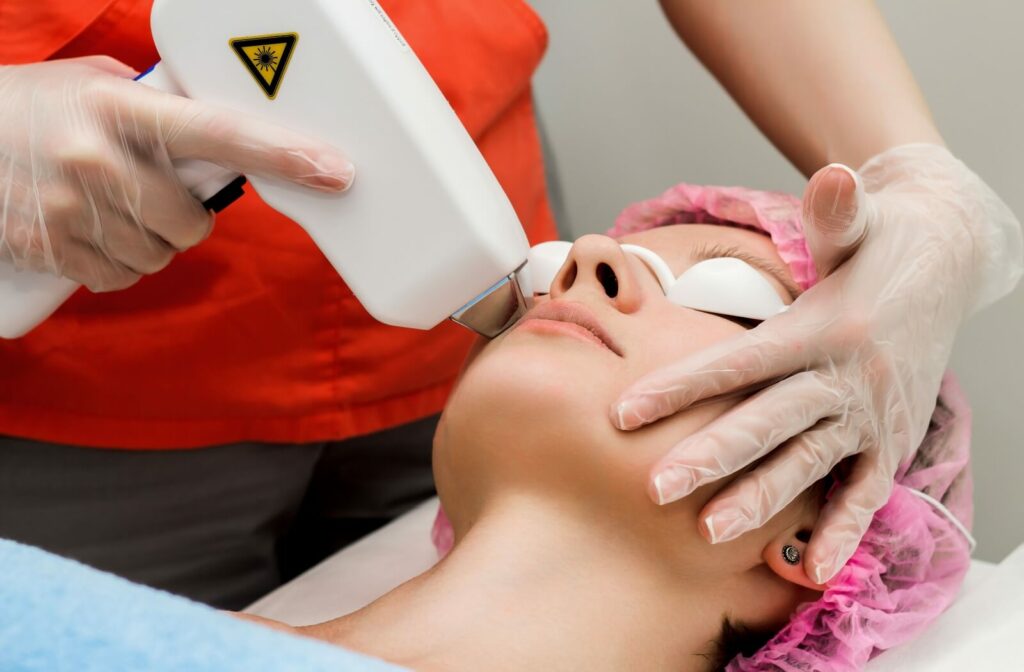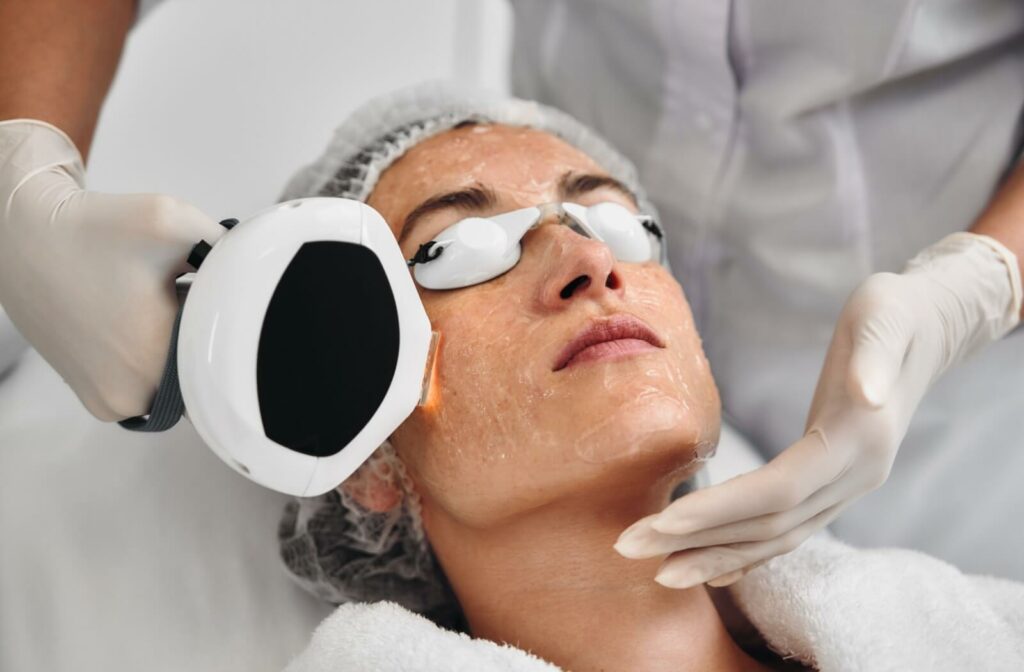Dry eye syndrome can be more than just an occasional discomfort—it can affect your vision, comfort, and quality of life. If you experience redness, irritation, a gritty sensation, or fluctuating vision, you may be dealing with meibomian gland dysfunction (MGD), one of the most common causes of dry eye.
While eye drops and warm compresses may provide temporary relief, Intense Pulsed Light (IPL) therapy is a treatment that targets the root cause of dry eye rather than just masking symptoms. IPL uses pulses of light to reduce inflammation, unclog oil glands, and restore tear stability, offering long-term relief for many dry eye sufferers.
What Is IPL Treatment for Dry Eye?
Intense Pulsed Light (IPL) therapy is a non-invasive procedure originally used in dermatology to treat skin conditions such as rosacea and sun damage. Over time, researchers discovered that its anti-inflammatory properties could also benefit individuals with chronic dry eye caused by MGD.
The meibomian glands, located along the eyelid margins, produce an essential oily layer that prevents tears from evaporating too quickly. When these glands become blocked, inflamed, or stop functioning properly, the tear film becomes unstable, leading to dryness, irritation, and discomfort.
IPL therapy delivers precise light pulses to the skin around the eyes, reducing inflammation and stimulating the natural oil flow from the meibomian glands. This helps restore a healthy tear film, reducing burning, redness, and dryness.
How Does IPL Work?
IPL treatment involves using short, controlled bursts of light applied to the skin around the eyes. This light energy:
- Reduces inflammation by targeting blood vessels that contribute to inflammation, which is a key factor in MGD.
- Unclogs oil glands by softening and melting hardened oil deposits in the meibomian glands, allowing them to function properly.
- Improves tear stability by encouraging the production of a balanced tear film, reducing symptoms of dry eye.
- Reduces bacterial overgrowth by helping eliminate bacteria and Demodex mites, which are known to worsen MGD and eyelid irritation.
Side Effects & Additional Benefits of IPL
IPL is a safe, non-invasive procedure with minimal side effects. Most patients experience mild redness that fades within a few hours, and some may notice a warming sensation during treatment, but discomfort is typically minimal.
One notable side effect of IPL for dry eye is the reduction of fine lines around the eyes. This occurs because IPL stimulates collagen production, which plays a key role in maintaining skin elasticity and smoothness.
How IPL Reduces Fine Lines
- Stimulates collagen production – The light pulses trigger the skin’s natural healing response, increasing collagen levels.
- Improves skin elasticity – Enhanced collagen helps firm the skin, reducing the appearance of fine lines and wrinkles.
- Promotes cell regeneration – IPL encourages the turnover of skin cells, leading to smoother, more even-toned skin.
Because IPL was originally developed as a dermatological treatment for conditions like rosacea and sun damage, many patients appreciate the added cosmetic benefits. In addition to treating dry eye symptoms, IPL can also:
- Reduce redness and uneven skin tone
- Enhance overall skin texture
- Brighten the skin around the eyes
While the primary goal of IPL for dry eye is to restore meibomian gland function and reduce inflammation, the bonus cosmetic effects are often a welcome benefit.

What to Expect During IPL Treatment
The IPL procedure is quick and relatively painless, typically taking about 15–20 minutes per session. Here’s what you can expect:
- Preparation – Your eye doctor will place protective shields over your eyes to protect them from the light.
- Application – A cooling gel is applied to the skin, followed by a series of gentle light pulses to the lower eyelids and surrounding area.
- Meibomian gland expression – In some cases, the doctor may manually express the oil glands immediately after treatment to help clear blockages.
Most people require a series of 3–4 treatments spaced two to four weeks apart for the best results.
How Long Do IPL Results Last?
Many patients notice an improvement in dry eye symptoms after just one or two sessions, but long-term relief usually requires a full treatment series. The benefits of IPL can last several months, but ongoing maintenance treatments may be needed to sustain results.
Maintaining proper eyelid hygiene, using warm compresses, and staying hydrated can help extend the benefits of IPL therapy.
Who Can Benefit from IPL for Dry Eye?
IPL therapy is most effective for individuals with MGD-related dry eye, especially those who:
- Have chronic dry eye symptoms despite using artificial tears or other treatments.
- Experience red, inflamed eyelids or have been diagnosed with ocular rosacea.
- Have clogged or dysfunctional meibomian glands, as determined by an eye exam.
However, IPL may not be suitable for individuals with certain skin tones, light sensitivity, or specific medical conditions. A consultation with an eye doctor can determine if IPL is right for you.
Your Partner in Total Eye Health & IPL Treatment
If you’ve been struggling with persistent dry eye symptoms, IPL therapy may provide the long-term relief you need. This treatment is designed to target the underlying cause of dry eye, helping improve tear film quality, reduce inflammation, and restore eye comfort.
At Advanced Eyecare Optometry in Chestnut Ridge, NY, we offer OptiLight IPL therapy to help patients find effective relief from dry eye and MGD symptoms. Our experienced team can assess your condition and create a personalized treatment plan to improve your eye health.
Schedule an appointment today to find out if IPL treatment is right for you. We’re here to help relieve your dry eye symptoms and support your journey to clear, comfortable vision.




